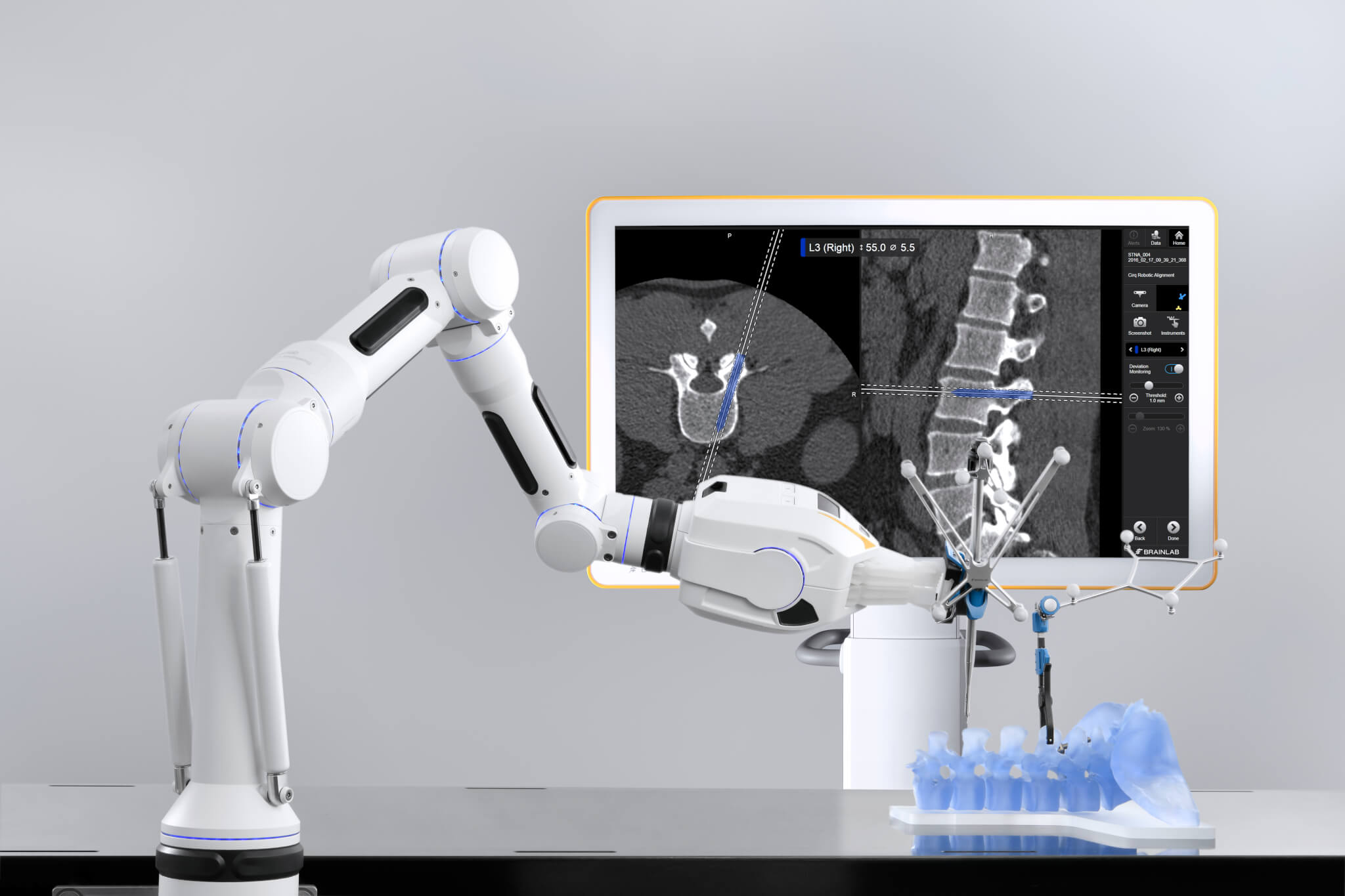
Advanced Robotic-Assisted Spine Surgery by Expert Spine Surgeon in Mumbai
At D Spine Clinic, we bring the future of spine care to you with robotic spine surgery a state-of-the-art advancement that combines robotic precision with expert surgical techniques. Led by Dr. Dhanish Mehendiratta, a globally trained spine surgeon in Mumbai, our clinic is at the forefront of integrating robotic assistance and navigation technology to perform highly accurate, minimally invasive, and safe spinal procedures.
Robotic spine surgery is especially valuable for complex conditions where precision is vital such as spinal deformities, revision surgeries, and cases involving delicate nerve structures.
What is Robotic Spine Surgery?
Robotic spine surgery combines advanced robotic systems with intraoperative imaging to assist surgeons during complex spinal procedures. The technology provides a 3D map of the patient’s spine, enabling precise navigation and placement of surgical instruments.
Robotic-assisted techniques are ideal for:
- Spinal deformity correction (e.g., scoliosis, kyphosis)
- Revision spine surgeries with altered anatomy or previous hardware
- Minimally invasive spine procedures requiring high precision
- Spinal trauma involving fractures or instability
- Spinal tumor resections near critical nerves or structures
- Degenerative spine conditions needing accurate instrumentation
Robotic-assisted surgery is highly effective for a range of spinal conditions, including:
- Herniated Discs: Relieving nerve compression causing pain, numbness, or weakness.
- Spinal Stenosis: Addressing narrowing of the spinal canal that impacts nerve function.
- Scoliosis and Kyphosis: Correcting spinal deformities with precise alignment.
- Spondylolisthesis: Treating vertebral slippage causing instability or nerve irritation.
- Spinal Tumor’s or Cysts: Removing abnormal growths while preserving spinal stability.
- Degenerative Spine Conditions: Managing chronic conditions leading to pain or nerve issues.
Book a Consultation at D Spine Clinic
Experience the future of spine surgery with the advanced navigation-assisted techniques available at D Spine Clinic. Schedule your consultation today with Dr. Dhanish Mehendiratta and take the first step toward safer, more precise, and highly effective spinal care in Mumbai.
The spine surgery robot is a tool that facilitates the surgeon’s pre-operative plan.
Much like a pilot formulates a pre-flight plan depending on the weather, route, payload, and fuel level, a surgeon formulates a pre-surgical plan in a virtual environment based on the anatomy, bone quality, and desired correction of deformity. That plan is done on a pre-operative CT scan and once complete, the plan is loaded into the robot’s computer.
During surgery, the robot facilitates the plan by pointing out the site for screw insertion, and the location and extent of bone removal.
The robot is passive in that it does not do the surgery—the surgeon still performs the surgery much like the pilot of a plane still flies the plane. The robot’s role is to help the surgeon be more efficient and precise.
The initiation of robotic spine surgery technology was 18 years ago and has evolved through 3 generations, with substantial improvements along the way.
The use of spine surgery robots is now just becoming mainstream. There are multiple commercial robots available. Within the next 5 years the use of a robot to perform complex spine surgery will be the standard of care.
Robotic spine surgery can be performed in a traditional operating room setting in a hospital. The robot can facilitate less invasive approaches, so surgery can be accomplished as an outpatient procedure. This technology also facilitates even the most complex surgery that needs to be performed in an inpatient setting.
Robotic spine surgery shortens operating time. The robot does not make a bad surgeon good, it makes a good surgeon more efficient and precise.
Any procedure where instrumentation (eg, screws) or implants need to be applied to the spine can be achieved using robotic spine technology. Also, robotic spine surgery may be used for any procedures where bone needs to be removed or cut from the spine.
Robotic spine surgery technology is most beneficial for complex revision surgery, where the anatomy may be distorted due to previous surgery. It’s also beneficial for deformity surgery where you have to predict the final shape of the spine and place screws in optimized locations to obtain the needed correction.
When patients hear “robotic spine surgery,” many assume that the robot is actually performing the surgery—but that’s not true. The surgeon still does the surgery. The robot is not a surgeon but rather a tool to assist the precision and efficiency of the surgery. The technology is very safe.
The benefits of robotic spine surgery include increased efficiency and accuracy. That translates into less time under anesthesia for the patient and less economic cost to the system.







